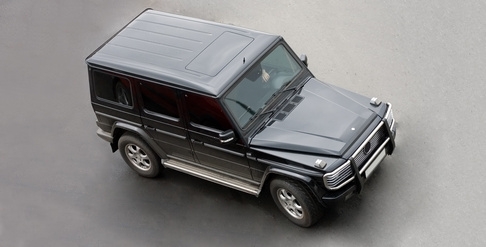
The National Highway Traffic Safety Administration (NHTSA) began rating the safety of cars in 1979. According to the NHTSA, consumers' positive reactions to the program prompted car manufacturers to voluntarily build safer cars. In 1992, the NHTSA developed the five-star rating system to make crash test results easier to understand. A car or SUVs safety rating is based on damage to crash test dummies and does not take into account the amount of damage sustained by the vehicle.
During a full-width frontal crash test, dummies are placed in the front driver and passenger seat of the SUV being tested. The car is then crashed into a stationary wall at 35 miles per hour. In order to determine the vehicle's safety rating, the damage done to the dummy's head, chest and legs is evaluated. If the odds of the crash resulting in a fatality are less than 10 percent, the SUV receives a five-star rating for the frontal crash test. A 10 to 19 percent chance of a fatality earns a four-star rating; a 20 to 34 percent chance earns three stars; and a 35 to 45 percent chance earns two stars. An SUV is given a one-star rating if the odds of a fatality are more than 45 percent. A separate rating is calculated for both the driver and passenger. The 2011 Subaru Forester and 2011 Kia Sorento both performed well in front impact tests.
When testing how an SUV protects passengers from a side impact, SafeCarGuide.com, Inc. reports that a 3,015 pound trolley is crashed into the side of the vehicle. At the time of the crash, the trolley is moving at 38.5 miles per hour. Both the front and rear seats are tested as are both the driver and passenger sides of the vehicle. When an SUV manufacturer makes side impact air bags optional rather than standard, that manufacturer must tell consumers if the side impact crash tests were performed on a vehicle equipped with the optional airbags. As with the frontal crash test, the vehicle's rating is based on the odds of obtaining a fatal injury during a crash. A five-star rating is assigned when the odds of a fatality are less than 6 percent. Four stars indicate a 6 to 10 percent chance of fatality, three stars an 11 to 20 percent chance, two stars a 21 to 25 percent chance and one star a greater than 25 percent chance. The 2010 Dodge Journey and the 2011 Volvo XC60, both of which have side impact airbags, received high side impact safety ratings.
In 2001, the National Highway Traffic Safety Administration (NHTSA) began calculating the likelihood that an SUV would tip or roll over. Rollover risk was calculated based only on how the height of the vehicle's center of gravity compared to its width. The NHTSA later added testing to calculate a vehicle's rollover risk when it was moving versus when it was stationary. In addition to calculating the likelihood that an SUV will roll over, the Insurance Institute for Highway Safety (IIHS) also tests the strength of a vehicle's roof and structure. This test involves pushing a metal plate into the SUV roof and measuring how much force is required to crush the roof in five inches. This number is then compared to the weight of the SUV to determine how well the SUV would protect its occupants if it did roll. In IIHS tests, the 2010 Toyota Highlander, 2011 Jeep Grand Cherokee and 2008 Dodge Nitro all performed well in rollover tests. The Nissan Pathfinder, however, received marginal performance ratings for the 2005 through 2010 model years.